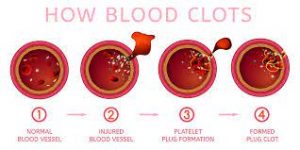Table of Contents
What are Low platelets?

Cancer treatments decrease the level of certain blood cells below normal. Platelets are one of these types of blood cells. The medical term for low platelets is “thrombocytopenia.”
Platelets help stop bleeding by making the blood cells clump together, or clot. It blocks off the cut blood vessels so they can heal. Normal platelet levels in your blood are important for good health.
You can develop a low platelet count if your body does not make enough platelets or if your body loses or destroys platelets. A low platelet count is a common side effect of cancer and treatment.
How bad are my low platelets?
Mild: Usually platelets count remains around 75,000/mm3. Other symptoms are easy bruising, superficial bleeding into the skin, and cuts/ wounds that keep bleeding. Most of the time, mild symptoms can be safely managed at home by following the tips given in the section below.
Moderate: Platelets count typically ranges between 75,000 – 50,000/mm3. Other symptoms are prolonged bleeding from cuts, bleeding from gums or nose, blood in urine or stools and fatigue.
Severe: Platelets count remains below 50,000/mm3. Seek urgent medical help under your doctor’s supervision if bleeding can’t be controlled by the first-aid techniques.
How to manage mild low platelets?
Keep track of your platelets levels using Ankr (myAnkr web portal or the Ankr app). It will help you describe the problem to your doctor or nurse.
When you have a low platelet count, take extra care to avoid situations that could cause bleeding. Here are some tips:
- Ask your doctor before drinking alcohol or taking any new medication (over the counter, pain relievers). These can make bleeding problems worse.
- Use an extra soft toothbrush and brush gently. Do not floss if your gums bleed.
- Blow your nose gently, using a soft tissue.
- Be extra careful when using scissors, a knife, a needle, or other sharp tools.
- Take precautions to avoid burns when you are cooking.
- Shave with an electric razor.
- Avoid contact sports and other activities that might cause injury.
- Use a nail file with rounded ends to trim nails, instead of nail clippers.
- Do not walk around with bare feet, inside or outside.
- Think about whether there are ways to reduce your risk of falls at your home.
How to manage severe low platelets?
Bleeding that won’t stop is a medical emergency. Seek immediate help for bleeding that can’t be controlled by the usual first-aid techniques, such as applying pressure to the area.
What causes low platelets?
There are several common causes, including:
- Chemotherapy damages bone marrow, the tissue inside the bones where your body makes platelets. A low platelet count from chemotherapy is temporary. It is rare that chemotherapy permanently damages bone marrow cells.
- A large amount of Radiation therapy to the pelvis or having radiation therapy and chemotherapy at the same time can decrease platelet levels.
- Sometimes the body makes antibodies that destroy healthy platelets.
- Certain cancers (leukemia or lymphoma) can lower the platelet count.
- Some cancers that spread to the bone may cause a low platelet count.
